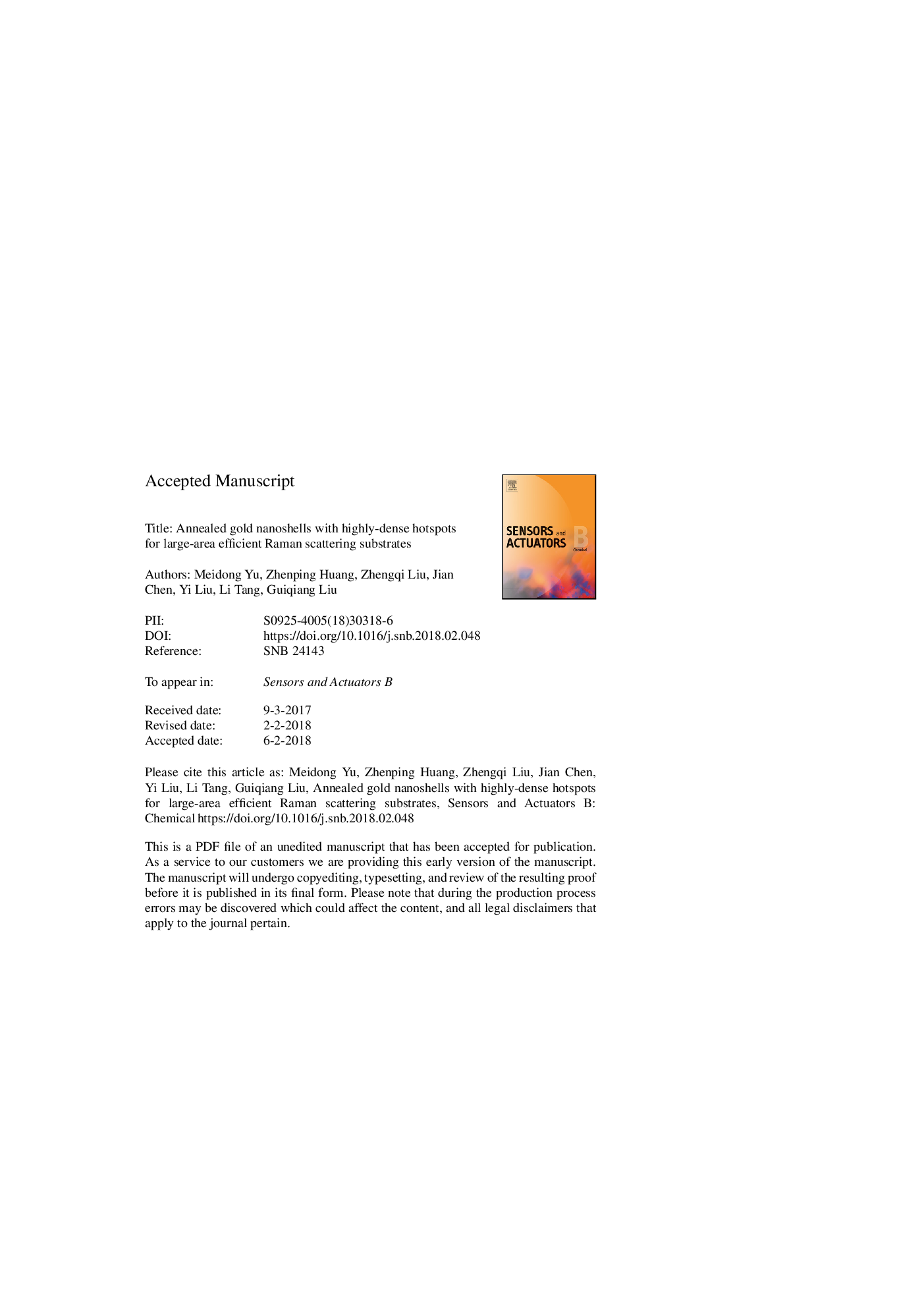| Article ID | Journal | Published Year | Pages | File Type |
|---|---|---|---|---|
| 7140818 | Sensors and Actuators B: Chemical | 2018 | 24 Pages |
Abstract
Surface-enhanced Raman scattering (SERS) technique has presented great potential in medical diagnosis, environment monitoring and food detection due to its high sensitivity, rapid response and fingerprint effect. Many efforts have been concentrated on all kinds of strategies to produce efficient SERS substrates. Here, we report on a simple and controllable method to produce large-area efficient SERS substrates with abundant discrete Au nanoparticles or clusers. The SERS substrates are easily fabricated via a simple annealing process of plasmonic nanoshells coated on photonic structures. The optimally designed Raman substrates show prominent Raman enhancement effect and extremely low detection limit. In comparison to the bare continuous gold film, the optimal SERS substrates annealed at 300â¯Â°C present a Raman enhancement of more than 6 orders of magnitude. The ultrasensitive SERS sensing capability is demonstrated down to 10â12â¯M by detecting rhodamine 6G (R6G) molecules. The superior Raman properties of the proposed SERS substrates can be ascribed to the highly-dense electric field hotspots mainly formed by interpartice plasmons and crevice gap plasmons. The simple and controllable fabrication strategy and superior performance make the substrates promising candidates for the development of inexpensive, efficient and mass-produced SERS substrates.
Related Topics
Physical Sciences and Engineering
Chemistry
Analytical Chemistry
Authors
Meidong Yu, Zhenping Huang, Zhengqi Liu, Jian Chen, Yi Liu, Li Tang, Guiqiang Liu,
